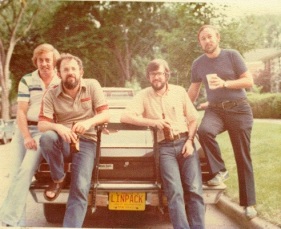
Contributed by: Joseph Tanner Slagel, Graduate Student, Dept. of Mathematics, Virginia Polytechnic Institute & State University
As a graduate student at Virginia Tech, my research interests are in large-scale numerical linear algebra. In particular, I have recently been studying stochastic approximation methods for solving very large least square problems. These are least square problems where the data size is terabytes (or even petabytes!) in size, and thus cannot fit in a computer CPU’s memory all at once.
I looked at the Statistical Inverse Problems Workshop at the Statistical and Applied Mathematical Sciences Institute (SAMSI) as an excellent opportunity to learn about emerging topics and techniques that I could apply to my own personal research.
I attended the Statistical Inverse Problems Workshop from January 26-27, 2017. The friendly and open atmosphere of the SAMSI workshop made it easy for me to make new connections and to discuss topics related to my research. The experience gave me the opportunity to work with a dynamic range of professionals (graduate students, postdocs and junior/senior level faculty), which helped me gain perspective from mathematicians at various stages of their career.
“Attending this SAMSI workshop was a great way for me to connect with other researchers whose interests overlap with my own.”
A distinguishing feature of the workshop was that, in addition to plenary and research talks, there was a lot of time for research discussions and collaborations on current projects – small groups were encouraged to find an open room and work for multiple hours on emerging research questions.
The talks at the workshop gave me an opportunity to learn about important problems in Bayesian inverse problems. Despite the small group, I heard a range of talks that provided an overview of open problems in the field, expounded on main computational and algorithm challenges, and described lots of cool real-life applications. The most beneficial part of the workshop for me was getting to speak to others about my research. I received a lot of helpful input and pointers to resources that have helped me see where my work fits into the larger statistical inversion community.

Ahmed Attia (instructing), a Postdoctoral Fellow at SAMSI, gives a research lecture at the Statistical Inverse Problems Workshop
Attending this SAMSI workshop was a great way for me to connect with other researchers whose interests overlap with my own. I look forward to returning to SAMSI in the future for more collaborations and discussions!
NOTE: To see what subjects were presented at this workshop visit the SAMSI website at: www.samsi.info/opt-inv-prob.




